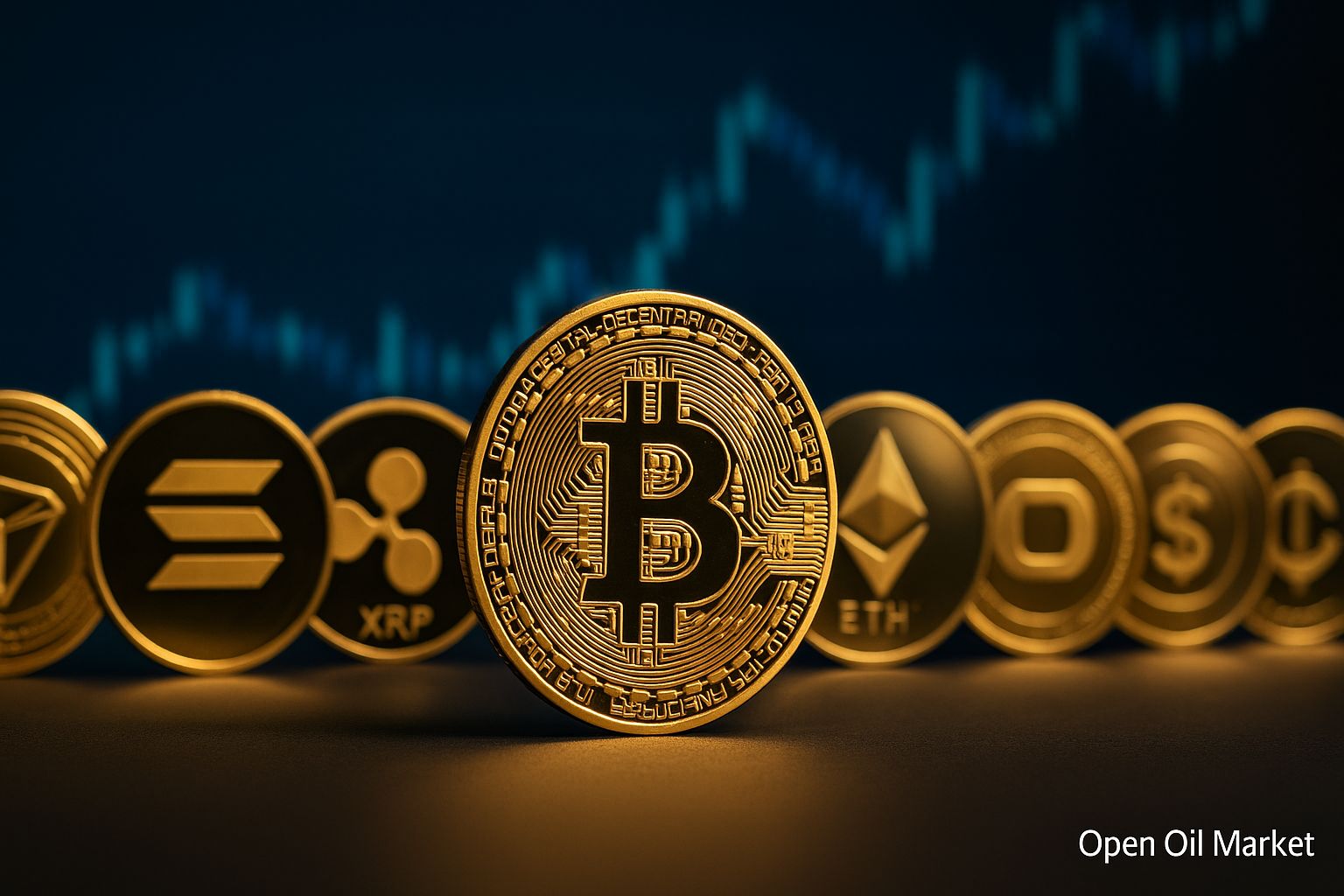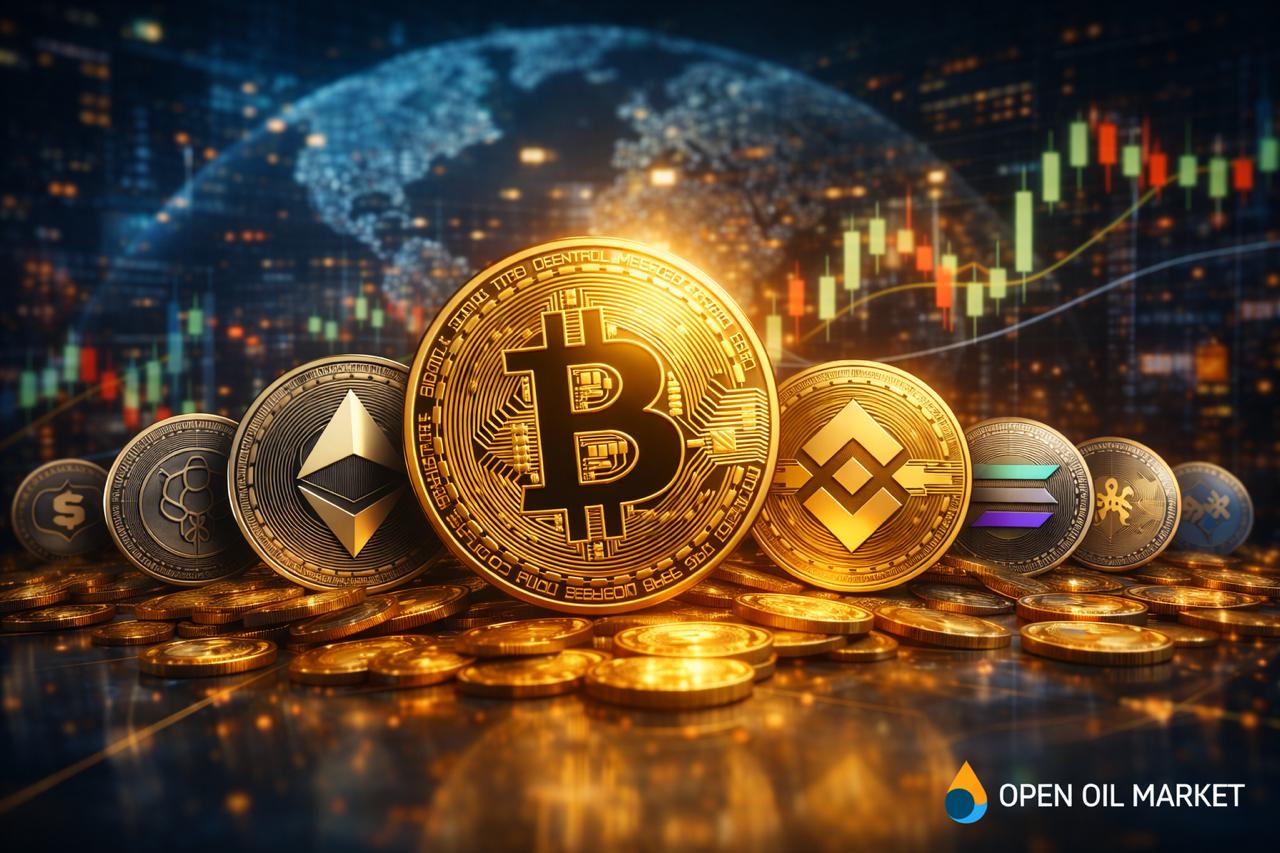
Current Cryptocurrency News as of October 16, 2025: Bitcoin Holds at $110,000, Ethereum Recovers, Cryptocurrency Market Stabilizes. Analytics and Forecasts for Investors.
Market Stabilization After Volatility
As of the morning of October 16, the cryptocurrency market shows signs of stabilization following sharp fluctuations last week. Bitcoin remains above the $110,000 mark, bouncing back from a drop on October 10, when the total market capitalization for cryptocurrencies fell by approximately $500 billion in a single day. The overall value of the crypto market is now estimated at around $3 trillion. Investors are gradually returning to the market, yet they maintain caution amidst recent volatility.
Bitcoin Holds Key Level
Bitcoin (BTC) is trading at around $112,000, maintaining an important support level at $110,000. Earlier in October, the leading cryptocurrency surged to a peak of $121,000, close to its all-time high, before undergoing a correction. Nonetheless, on an annual basis, BTC has seen significant growth, and its market share now exceeds 50%. The influx of institutional capital is aiding in the restoration of confidence in Bitcoin: the spot ETF launched by BlackRock this month attracted about $1.2 billion in investments in just a few days, highlighting the growing interest from major players. Analysts note that futures positions in BTC have stabilized (with approximately $25.5 billion in open interest), and increased demand for call options signals expectations of further growth. Overall, Bitcoin reaffirms its status as "digital gold," remaining a key benchmark for the entire market.
Ethereum and Other Leading Altcoins
Ethereum (ETH), the second-largest cryptocurrency by market capitalization, is currently trading around $4,070. After a recent downturn, Ethereum has resumed its upward trajectory, fueled by steady demand for its blockchain platform for decentralized finance (DeFi) and NFTs. Ethereum continues to serve as the foundation for numerous blockchain applications, and expectations for new technological upgrades (network scalability, performance enhancements) keep investors interested.
Among major altcoins, Binance Coin (BNB) stands out — the token of the Binance ecosystem is priced at approximately $1,170. BNB is used for transaction fee payments and decentralized applications on the Binance Smart Chain, maintaining a high value despite regulatory pressures. XRP, the token of the Ripple payment network, also remains resilient, trading around $2.5. XRP has strengthened significantly over the year, particularly after Ripple's legal victories, which regained investor trust. The market capitalization of XRP remains one of the largest, confirming its status as a key player in cross-border payments.
Altcoin Market: Solana, Cardano, and Others
The segment of other altcoins is gradually recovering after experiencing deeper declines than Bitcoin. Solana (SOL), one of the fastest-growing smart contract platforms, is trading around $200 amidst a resurgence of activity in DeFi applications. Despite previous technical setbacks, Solana is once again attracting users with its high speeds and low fees.
The platform token Cardano (ADA) is sustaining around $0.68. The project is known for its scientifically-oriented approach to blockchain development, and recent updates are enhancing its functionality. While ADA's price remains below historical highs, the community and developers are confident in the platform's long-term potential.
Dogecoin (DOGE), a meme cryptocurrency, remains in the top ten by market capitalization. After a decline of over 20% in early October, DOGE has stabilized around $0.20. The token maintains popularity due to community support and attention from well-known entrepreneurs. Generally, many small tokens have experienced heightened volatility: some altcoins declined by 30–50% in a week. Investors are now taking a more selective approach to investments, focusing on projects with a solid technological foundation and real-world applications.
Market Leaders: Top 10 Most Popular Cryptocurrencies
- Bitcoin (BTC) — The first and largest cryptocurrency, "digital gold." Price around $112,000; dominates the market and attracts both retail and institutional investors.
- Ethereum (ETH) — The second-largest crypto asset, a platform for smart contracts and DeFi. Price around $4,070; supports the operation of hundreds of decentralized applications while actively improving network scalability.
- Tether (USDT) — The largest stablecoin, pegged to the US dollar 1:1. Trading at $1; serves as a primary source of liquidity in the crypto market, facilitating exchanges between various digital assets.
- Binance Coin (BNB) — The token of the Binance exchange and BSC network. Price around $1,170; used for fee payments and access to services within the Binance ecosystem, remaining one of the most valuable altcoins.
- XRP (Ripple) — The cryptocurrency of the Ripple platform for global payments. Price around $2.5; following courtroom successes, it has regained its standing, oriented toward fast and cost-effective cross-border transfers.
- USD Coin (USDC) — The second most significant stablecoin from Circle. Price $1; known for high transparency of reserves and favored by institutional investors for secure entry into crypto assets.
- Solana (SOL) — A next-generation high-speed blockchain. Price around $200; the Solana ecosystem is expanding (DeFi, NFTs), and the SOL coin has recovered after a correction, once again drawing attention from developers.
- Cardano (ADA) — A smart contract platform with a scientific development approach. Price around $0.68; the project is continually updated (e.g., the Hydra protocol for scaling) and possesses a large community, actively used for developing decentralized applications.
- Dogecoin (DOGE) — A meme token that has become a popular crypto asset. Price around $0.20; supported by enthusiasts and some celebrities, remains volatile but ranks among the largest coins.
- Tron (TRX) — A blockchain platform focused on the entertainment industry and Web3. Price around $0.32; known for integrating stablecoins (a significant portion of USDT circulates on the Tron network) and staking options.
Institutional Interest: Bitcoin ETF and Capital Influx
The beginning of October marked a significant event: BlackRock launched the first spot Bitcoin ETF in the U.S. (iShares Bitcoin Trust), which attracted about $1.2 billion in less than a week. This impressive influx of funds from major investors signals a growing trust from traditional financial institutions in cryptocurrencies. Experts note that the emergence of such exchange-traded funds facilitates institutional access to BTC through familiar tools and could stimulate the inflow of new capital into the market. Several other asset managers are also awaiting regulatory decisions regarding their Bitcoin ETF applications, reflecting the intensifying competition in this space. The participation of Wall Street in digital assets is becoming increasingly prominent, enhancing market liquidity and bringing it closer to greater maturity.
Regulation and Security: Record Confiscation and New Rules
The sharp rise in the value of crypto assets has attracted close scrutiny from regulators. In the U.S., the Department of Justice initiated the largest cryptocurrency confiscation in history, seizing over 127,000 BTC (approximately $15 billion) in relation to an international fraud case. This precedent demonstrates the authorities' determination to curb criminal use of digital assets. Meanwhile, regulatory bodies worldwide are formulating new rules for the industry: in the European Union, the MiCA regulation is set to come into effect, and in CIS countries, laws regarding licensing of crypto exchanges and taxation of cryptocurrency operations are under discussion. The increase in oversight adds requirements for businesses and investors but enhances market transparency and protects participant rights. More clearly defined "rules of the game" could attract new institutional players.
Industry Measures: Supporting Users After the Crash
Players in the crypto industry are taking steps to bolster investor trust. The largest exchange, Binance, has launched a $400 million initiative to compensate users affected by the market crash on October 10-11. During that time, mass sell-offs and price anomalies led to record liquidations of futures positions exceeding $19 billion. Now, as part of Binance's program, retail traders will receive $300 million in USDC (proportionate to their losses), and an additional $100 million will go toward subsidized lending for institutional clients—to reduce liquidity pressure and support their activity. Binance's management emphasizes that they are acting voluntarily, considering the restoration of trust in the industry critically important. Analysts believe such steps signal the maturation of the market: major companies are willing to share responsibility for the stability of the ecosystem. In the long run, these measures could enhance user loyalty and mitigate systemic risks.
Market Prospects: Cautious Optimism
As 2025 draws to a close, the crypto market greets the prospects with cautious optimism. After recent upheavals, investors are closely monitoring the macroeconomic situation—central bank actions, inflation levels, and overall sentiment in global capital markets. Should external conditions remain favorable, and the regulatory environment improves, cryptocurrencies stand a chance to resume their upward trend. Additional momentum may arise from new institutional inflows and the launch of products that broaden access to digital assets.
In the short term, price consolidation may be expected: the market needs time to digest the volatility it has experienced and solidify at reached levels. However, long-term trends remain positive. Cryptocurrencies are increasingly integrating into the global financial system, and their sphere of application is expanding—from payments to capital preservation. Many large investors view digital assets as a strategic part of their portfolios. Thus, despite periodic fluctuations, the overall direction of the market is positive: further capitalization growth and new opportunities for investors are anticipated.




